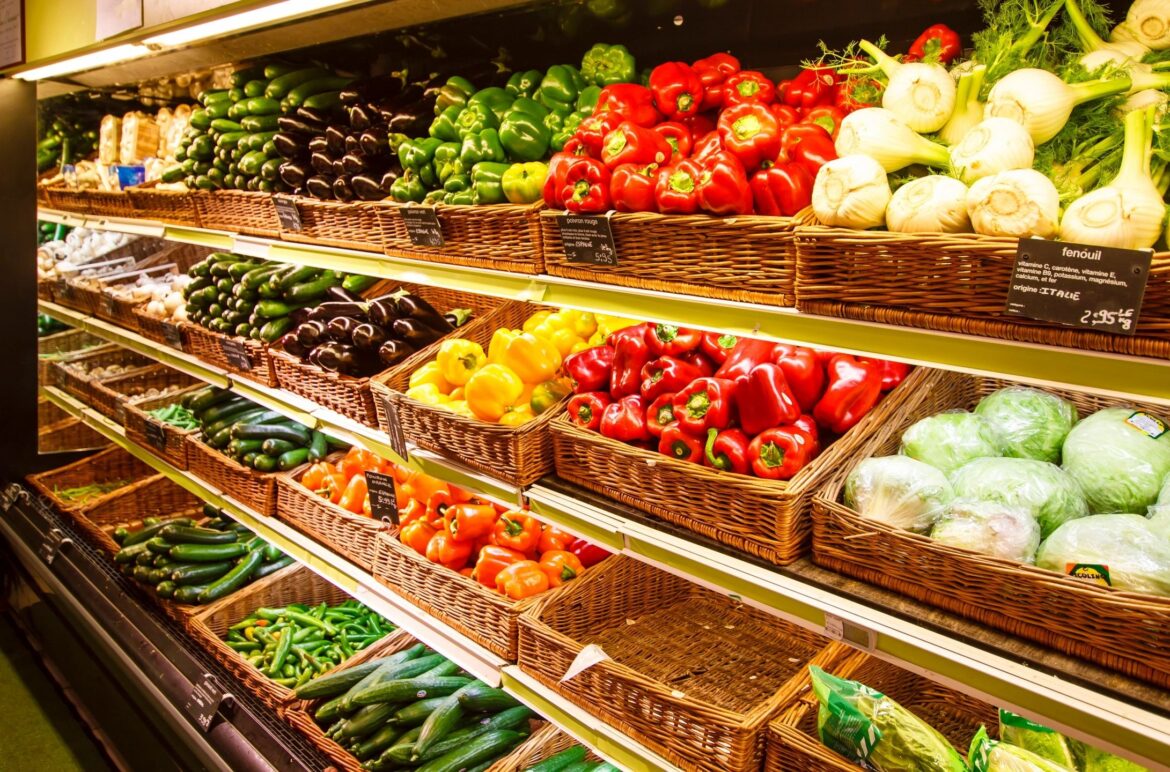According to Feeding America, 66% of Americans had to choose between food and medical care. In the same 2014 Hunger in America study, 79% purchase food that is inexpensive and unhealthy over nutritious options. Unfortunately, many of us have hard choices because of medical bills or simply choose not to get the care we need due to the more pressing need to feed our families. Food insecurity is a bigger problem than most realize and, for many families, causes much more than hunger pains.
What is Food Insecurity?
First, we should define food insecurity. The definitions are relatively simple, but the concepts have profound effects on various populations throughout the country. These definitions are provided by the US Department of Agriculture Economic Research Service.
Low food security is the “reduced quality, variety, or desirability of diet.” There may be “little or no indication of reduced food intake.” This used to be called “food insecurity without hunger.”
Very low food security is “multiple indications of disrupted eating patterns and reduced food intake.” This used to be called “food insecurity with hunger.”
The Committee on National Statistics recommended the changes to these definitions to better represent the problems many Americans face every day. The committee also helps to oversee the methods used to measure food insecurity. Studies typically consider economic and social factors on nutrition, as well as other factors determined by nutritionists, statisticians, and others who may offer valuable insight.
What Factors Affect Food Insecurity?
The US Department of Health and Human Services promotes Healthy People 2030. This initiative has several objectives, all designed to call attention to issues with the highest public health burden. One of those objectives is food insecurity. They have determined several factors affecting food insecurity and aim to reduce their impact on those most affected by them.
Income
Income affects food insecurity in several key ways, from the inability to afford groceries to lack of access in addition to the stress placed on breadwinners to provide for their families with fewer resources. Let’s take a closer look.
Low-income neighborhoods may not have as many grocery stores that are regularly stocked with fresh produce or larger retail outlets offering a wider variety of affordable food options. With fewer food stores to shop from, prices at such stores are typically higher. They can also force residents to shop at discount retailers that don’t specialize in food sales or convenience stores with higher food prices. Some food support programs like WIC (the Special Supplemental Nutrition Program for Women, Infants, and Children) only cover specific types or brands of foods. If these are not available, substitutions are rarely allowed.
Transportation also becomes a factor for those with low income. Many families without access to personal transportation rely on public transit, even to get their groceries. This limits the amount of food they can purchase at any one time and also the types of food, as transporting food long distances can take time. Cold foods can easily spoil or melt, especially in warm weather, on a crowded bus. Children may not have fresh milk and other foods recommended for healthy growth and development, both physical and mental.
With lower income comes the stress of stretching the dollar, including paying the bills and feeding the family. Added stress can affect your mental health and mental health struggles can make it harder to manage your money, creating a spiral from which many have a hard time breaking free.
Employment
Employment is a direct reflection of income and therefore has a significant impact on food insecurity. Low-income neighborhoods rarely have enough job opportunities to support the number of working-age residents in the area. The job opportunities that are available rarely pay a livable wage, sometimes requiring multiple members of the same household to work several jobs in order to support everyone in the family. With long hours in jobs that may be hazardous to one’s health, workers feel the effects both short- and long-term, increasing their risk factors for various health conditions.
For example, during the Covid-19 pandemic, many low-wage workers faced some of the most dangerous conditions, frequently working as cashiers, cooks, laborers, or in various healthcare positions. Many of those who lost their jobs worked in such low-wage positions and faced job and food insecurity as a result.
Residents in low-income neighborhoods must travel well outside of their immediate area for work, especially for higher-paying positions, adding to the time spent away from home to earn income. Families affected by food insecurity must spend money on public transportation or ride-sharing, instead of food.
Disability
The CDC is responsible for the National Health and Nutrition Examination Survey conducted each year. An analysis of the surveys over a span of six years revealed that women with a disability were more likely to report that they’ve also experienced food insecurity at some point prior or concurrent to their disability. Those that reported disability, as well as a poor diet and low or very low food security, were more likely to receive some type of food assistance.
The connection between food insecurity and disability is not new. However, the extent of the problem and what can be done to correct it are still being evaluated by the CDC and other agencies. This is another objective of Healthy People 2030 and will most likely continue to be a primary goal in the next iteration of the program in 2040 and beyond.
Who is Most Likely to Be Affected?
The disparities in income, employment, and disability disproportionately affect some people with low food security. As recently as 2020, the percentage of US households experiencing low or very low food security was just over 10 percent. While this is a staggering number of people affected by hunger, 17.2% of Hispanic households experience hunger and the number of Black households is over twice the national average at 21.7 percent.
What Are the Medical Consequences of Food Insecurity?
Hunger and food insecurity go beyond the stress of being unable to afford nutritious food. For children, physical and mental development can be affected. For adults, risk factors for chronic health conditions increase. Hunger affects the mental, emotional, and physical health of anyone experiencing food insecurity.
Children
The odds that a child under 36 months will experience fair or poor health because of food insecurity is 95% higher than in children living in homes reported without hunger. This is a startling statistic and one that must change if we are to give children the best odds at mental and physical health stability as they grow.
Young children may experience developmental delays when not receiving adequate food nutrition. Poorer cognitive function was reported for children in grades 1, 3, and 5 during a study conducted from 1999 to 2003 by the Economics of Education Review. A large part of poor performance in school may be traced to behavioral challenges caused by both lack of nutrition and a more stressful home environment. They may also be affected by the mental health of others in the home, most notably a child’s mother. Higher rates of depression and anxiety in parents have been proven to affect children of all ages, but most especially adolescents between the ages of 14 and 25.
Adults and Seniors
For adults, the risk factors of food insecurity on chronic health conditions are much more wide-ranging and no less profound. This is especially true if food insecurity began early in life as a child and continued for many years. For those populations most at risks, like African Americans, this causes the most health problems.
The conditions most likely to arise because of food insecurity include:
Poor oral health
Depression and anxiety
Iron deficiency
Poor maternal health
Diabetes
Hypertension (high blood pressure)
Obesity
What Are the Financial Costs of Food Insecurity?
Feeding America has calculated the additional healthcare costs associated with hunger. Through their own research and by compiling data from Medicaid/Medicare and other sources, they have been able to accurately map the annual costs at the county and state level and per adult. For example, the lowest increase in healthcare costs due to low food insecurity is in North Dakota with $57 million, but the highest is in California with just over $7 billion. This is a large disparity in cost increase and the size of the population alone is not enough to explain the difference.
Another study compiled data from the Survey of Income and Program Participation in two statistical models to determine the probability of medical debt. Nearly 20% of households carry some form of medical debt. Of those, around half had private insurance. The average amount of that medical debt was nearly $22,000. The highest risk factors for medical debt were having no health insurance, a private health insurance with a high deductible, or a disability. Carrying medical debt, especially high medical debt, was found to contribute to low food security, especially for those who are already at risk, such as the Black population and others who live in low-income areas.
Conclusion
While anyone in the US can be affected by food insecurity, some populations are more at risk than others. African Americans struggle more than most and Black Health Matters helps to raise awareness by sharing the disproportionate effects that many face every day. If you experience hunger and food insecurity, know that there is access to food resources and education about support systems near you. Reach out to healthcare providers, case workers, and other social supports to learn more about what services are available in your area.
The post From Hospital Bills to Hunger Pains: The Costly Toll of Medical Care on Food Security appeared first on Black Health Matters.




